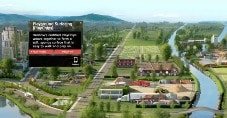Oakridge Park
/0 Comments/in Blower Truck Services, Construction Landscape Journal, Corporate News, Environment, Green Infrastructure, Landscape, Municipal and Infrastructure Journal, Projects, Soil, Sustainable Development /by Tanya RichardsThe Revolution in Aggregate Installation
/0 Comments/in Blower Truck Services, Environment, Erosion Control, Landscape Journal /by Tanya RichardsFrom the field: Video of rooftop hose setup
/0 Comments/in Blower Truck Services, Construction Landscape Journal, Projects /by Tanya RichardsVIDEO: New Vedder Bridge in Chilliwack
/0 Comments/in Blower Truck Services, Corporate News, Landscape, Projects, Soil /by Tanya RichardsRiparian Revegetation
/0 Comments/in Blower Truck Services, Construction Landscape Journal, Environment, Erosion Control, Green Infrastructure, Municipal and Infrastructure Journal, Projects, Streambank Restoration, Sustainable Development /by Tanya RichardsPlayground Wood Chips – Are they safe?
/0 Comments/in Blower Truck Services, Parks, Playgrounds /by Tanya RichardsPlayground Wood Chips – Are they safe?
Playground wood chips are a way to cushion children if they should fall off of or near playground equipment, making the purpose of these wood chips all about safety. However, anything that will interact with children must be safe and trustworthy. When acquiring engineered wood fibre from a reputable supplier that is carefully produces the material, you can rest assured that the product will be safe.
Allergies
Allergies are always a potential hazard, as with any kind of new material introduced into a child’s life. Properly produced engineered wood fibre specifically for playgrounds are made from clean wood taken from mature forests, which is also called virgin wood. These trees have existed in an environment where there has been little to no interference from humanity, which means that there should be few to any harmful allergens involved. And since children are unlikely to come into any but brief skin contact with the wood chips, the likelihood of an allergic reaction is extremely low.
Compression
Properly produced playground wood chips are designed to be compressed in depth once placed in the playground. Typically, in order to effectively cushion the types of falls that a child would sustain from falling off of playground equipment, wood chips need to be piled to a depth of at least one foot after compression. Since compression is natural, particularly with kids running around on it, every year the the wood chips will tend to compress roughly three inches. If the wood chips become too compressed, they stop being safe because they become too rigid and dense. This is when a top-up is required to maintain the minimum 12″ depth.
General Shape
Wood chips that are designed to be used on playgrounds are not the same kind of wood chips or bark mulch that you would use in landscaping. Engineered wood fibre is made from the wood of the tree, and doesn’t include any bark mulch. With no bark and because of the way the wood is cut, silvers are minimal. If a child tumbles onto wood chips, having a reasonably smooth surface is important to keep from cutting his or her skin or poking them painfully. The cut of the material is designed to be both a cushion and to allow some rolling to occur.
Additional Characteristics
One important characteristic that the right kind of playground wood chips possess is that they are manufactured to be very fibrous. These fibers add to the spring-like qualities of the wood chips, so they will bend and flex if they need to cushion a fall instead of snapping and becoming dangerous. This is different from the high rigidity that most landscaping materials possess, which makes playground wood chips safer for this specific use. Engineered wood fibre is to be produced to meet ASTM standards, and the supplier should have their material tested regularly.
Extra Materials
Properly manufactured playground wood chips do not feature any foreign materials. While the rules for mulch and most other kinds of wood chips are very loose, the standards for playground wood chips are far stricter. For example, there are to be no twigs, no pebbles, and no pieces of bark mixed in with playground mulch. No recycled materials such as pallets or wood waste. Those extra pieces of material can end up being overly rigid and sharp, which can be harmful to a child amid a fall.
Chemical-Free
Chemicals tend to trigger allergies, skin rashes and other types of problems, to say nothing of being harmful to the overall environment. Obviously, pesticides should never be a part of your playground wood chips because these chemicals should never come near children. A lesser-known but hazardous substance called chromated copper arsenate is a major chemical that is used in timber preservation, but treated wood should never be involved in playground wood chips. You can identify the use of this chemical preservative by the green tint it gives wood.
Effective Sourcing
Working with the right supply company is the difference between being highly satisfied with the end results or being disappointed with them. You have responsibility to ensure a safe playground for children, and safety on the playground is of the utmost importance. Work with a trustworthy company that will only provide the safest hardwood-based playground wood chips. To understand how the best wood chip supply companies operate, you can start by learning more about Denbow, one of the premier wood chip suppliers in British Columbia.

